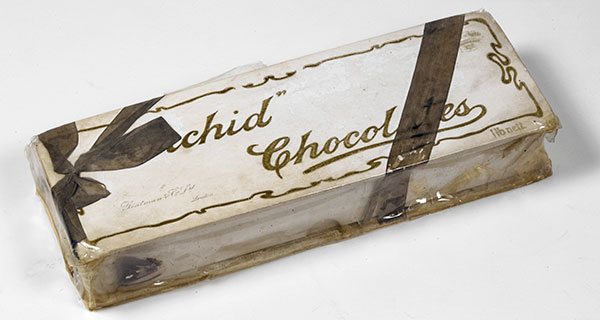BITE-SIZED HISTORY
Published in Issue 5 (September/October 2021), Volume 29BY TONY CANAVAN
Heroines being honoured in Belfast
Belfast City Council is to erect statues of Winifred Carney and Mary Ann McCracken in the grounds of City Hall. Councillors unanimously agreed to a motion to commemorate United Irishwoman McCracken and the republican and trade unionist Carney for their heroism, leadership and commitment to social justice and freedom.
Winifred Carney was born in Bangor but was reared at 5 Falls Road. She joined the Gaelic League and was secretary of the Irish Textile Workers’ Union. She was also a member of Cumann na mBan and the Irish Citizen Army. During the 1916 Rising she served alongside James Connolly in the GPO. Carney was imprisoned in England and stood as Sinn Féin candidate in East Belfast in the 1918 general election. She continued to work as a trade unionist and was a committed socialist until her death in 1943.
Better known is Mary Ann McCracken, sister of Henry Joy McCracken, executed for his part in the 1798 Rebellion. She was a radical thinker and social reformer, opposed to slavery and poverty, and an advocate for the rights of women.
Remembering the ‘Forgotten Ten’
A new exhibition in Kilmainham Gaol Museum marks the centenary of the men who became known as the ‘Forgotten Ten’. During the War of Independence 24 men were executed in Ireland by the British. Fourteen were shot by firing squad in counties Cork and Limerick, as both counties were under martial law. In Dublin, however, where martial law did not apply, ten men were hanged in Mountjoy, which was a civilian prison. ‘The Forgotten Ten’ were Kevin Barry (executed 1 November 1920), Patrick Moran, Thomas Whelan, Francis Flood, Bernard Ryan, Thomas Bryan and Patrick Doyle (executed 14 March 1921), Thomas Traynor (executed 25 April 1921), and Patrick Maher and Edmond Foley (executed 7 June 1921). Among the items on display are last letters to loved ones and historic photographs. Other exhibits include a statue of the Virgin Mary held by Frank Flood at his execution, and a shirt and collar returned to Thomas Traynor’s family by the prison authorities along with a box containing sixteen unsmoked cigarettes. Another artefact is a box of chocolates given to Thomas Whelan by Lester Collins, one of the Black and Tans guarding him in Mountjoy.
Keeping time in Waterford
Ireland’s first horological museum— dedicated to clocks and watches dating back hundreds of years in some cases— has opened in Waterford city. The National Museum of Time, located in a refurbished church at Greyfriars in Waterford’s Viking Triangle, has more than 600 items set out across two floors. The collection is based around donations from two of the country’s most prolific and long-standing horologists, David Boles and Colman Curran, both from Dublin. Along with the oldest Irish clocks, the museum has pieces from around the world. The clocks on display range from humble clocks for the poor to wonderful clocks for the rich.
Funding boost for local and regional museums
The Minister for Tourism, Culture, Arts, Gaeltacht, Sport and Media, Catherine Martin, has approved a series of grants, totalling €310,225, for local and regional museums under the Regional Museum Exhibitions Scheme 2021. All 32 projects that applied this year are benefiting, including the Tipperary Museum of Hidden History, which will exhibit the museum’s ‘Hidden Gems’, and the Old Cork Waterworks Experience, which recreates a representation of the boiler-house as it would have been during its working life c. 1863–1940. In announcing the awards, Minister Martin said: ‘Our local and regional museums are an extremely important resource for culture and heritage in towns and villages across the country. They are vital within the community and it is imperative that we support their role in our cultural heritage.’ The museums benefiting from the funding range from the likes of Limerick’s Hunt Museum and the Waterford Treasures to Cork’s Butter Museum and Mayo’s Jackie Clark Collection. The amounts awarded vary from €3,000 to €15,000.
Prehistoric Jaws
Scientists have discovered the remains of an adult male who was attacked by a shark more than 3,000 years ago. The man suffered at least 790 deep serrated injuries after being attacked by a shark in the Seto Inland Sea of the Japanese archipelago. His left hand was sheared off and he was probably alive during the attack, which has been dated to between 1370 and 1010 BC, according to an international team of scientists. This is believed to be the earliest direct evidence for a shark attack on a human. Oxford University researchers J. Alyssa White and Prof. Rick Schulting were looking for evidence of violent trauma on the skeletal remains of prehistoric hunter-gatherers at Kyoto University when they came across the shark victim, identified as ‘No. 24’, at the previously excavated site of Tsukumo. The Oxford researchers said: ‘The injuries were mainly confined to the arms, legs, and front of the chest and abdomen. Through a process of elimination, we ruled out human conflict and more commonly-reported animal predators or scavengers.’

Above: The box of chocolates given to one of the ‘Forgotten Ten’, Thomas Whelan, by Lester Collins, one of the Black and Tans guarding him in Mountjoy. (Kilmainham Gaol Museum)
















